Guillermo Puebla
MindSet: Vision. A toolbox for testing DNNs on key psychological experiments
Apr 08, 2024



Abstract:Multiple benchmarks have been developed to assess the alignment between deep neural networks (DNNs) and human vision. In almost all cases these benchmarks are observational in the sense they are composed of behavioural and brain responses to naturalistic images that have not been manipulated to test hypotheses regarding how DNNs or humans perceive and identify objects. Here we introduce the toolbox MindSet: Vision, consisting of a collection of image datasets and related scripts designed to test DNNs on 30 psychological findings. In all experimental conditions, the stimuli are systematically manipulated to test specific hypotheses regarding human visual perception and object recognition. In addition to providing pre-generated datasets of images, we provide code to regenerate these datasets, offering many configurable parameters which greatly extend the dataset versatility for different research contexts, and code to facilitate the testing of DNNs on these image datasets using three different methods (similarity judgments, out-of-distribution classification, and decoder method), accessible at https://github.com/MindSetVision/mindset-vision. We test ResNet-152 on each of these methods as an example of how the toolbox can be used.
Visual Reasoning in Object-Centric Deep Neural Networks: A Comparative Cognition Approach
Feb 20, 2024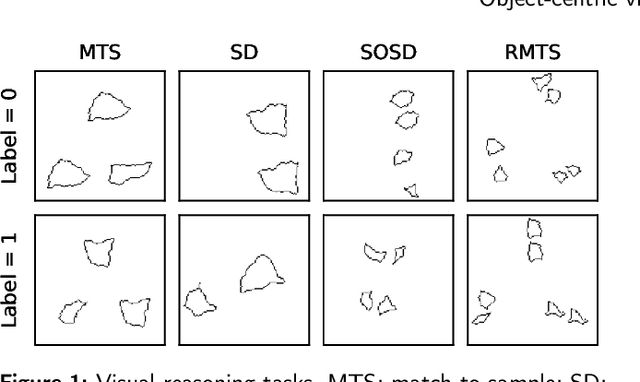
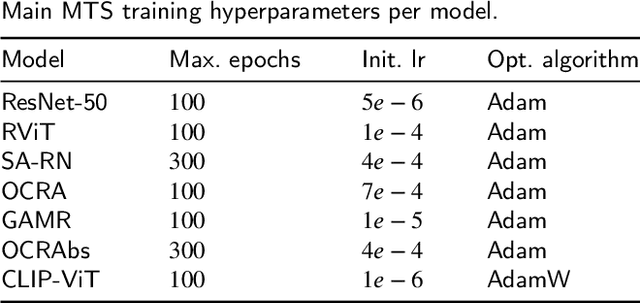
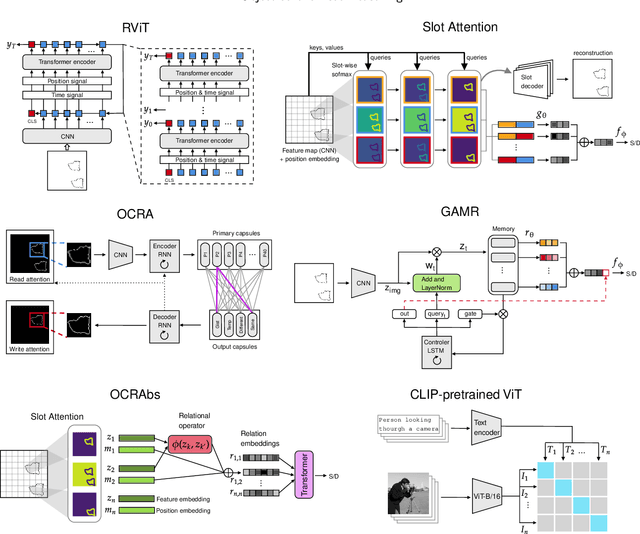
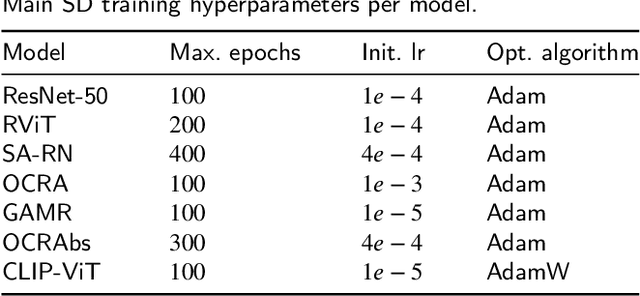
Abstract:Achieving visual reasoning is a long-term goal of artificial intelligence. In the last decade, several studies have applied deep neural networks (DNNs) to the task of learning visual relations from images, with modest results in terms of generalization of the relations learned. However, in recent years, object-centric representation learning has been put forward as a way to achieve visual reasoning within the deep learning framework. Object-centric models attempt to model input scenes as compositions of objects and relations between them. To this end, these models use several kinds of attention mechanisms to segregate the individual objects in a scene from the background and from other objects. In this work we tested relation learning and generalization in several object-centric models, as well as a ResNet-50 baseline. In contrast to previous research, which has focused heavily in the same-different task in order to asses relational reasoning in DNNs, we use a set of tasks -- with varying degrees of difficulty -- derived from the comparative cognition literature. Our results show that object-centric models are able to segregate the different objects in a scene, even in many out-of-distribution cases. In our simpler tasks, this improves their capacity to learn and generalize visual relations in comparison to the ResNet-50 baseline. However, object-centric models still struggle in our more difficult tasks and conditions. We conclude that abstract visual reasoning remains an open challenge for DNNs, including object-centric models.
The role of object-centric representations, guided attention, and external memory on generalizing visual relations
Apr 14, 2023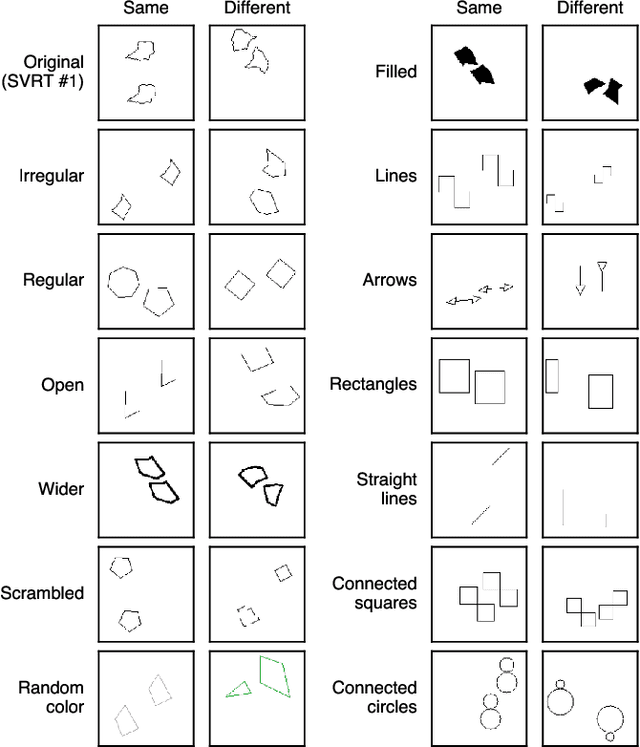
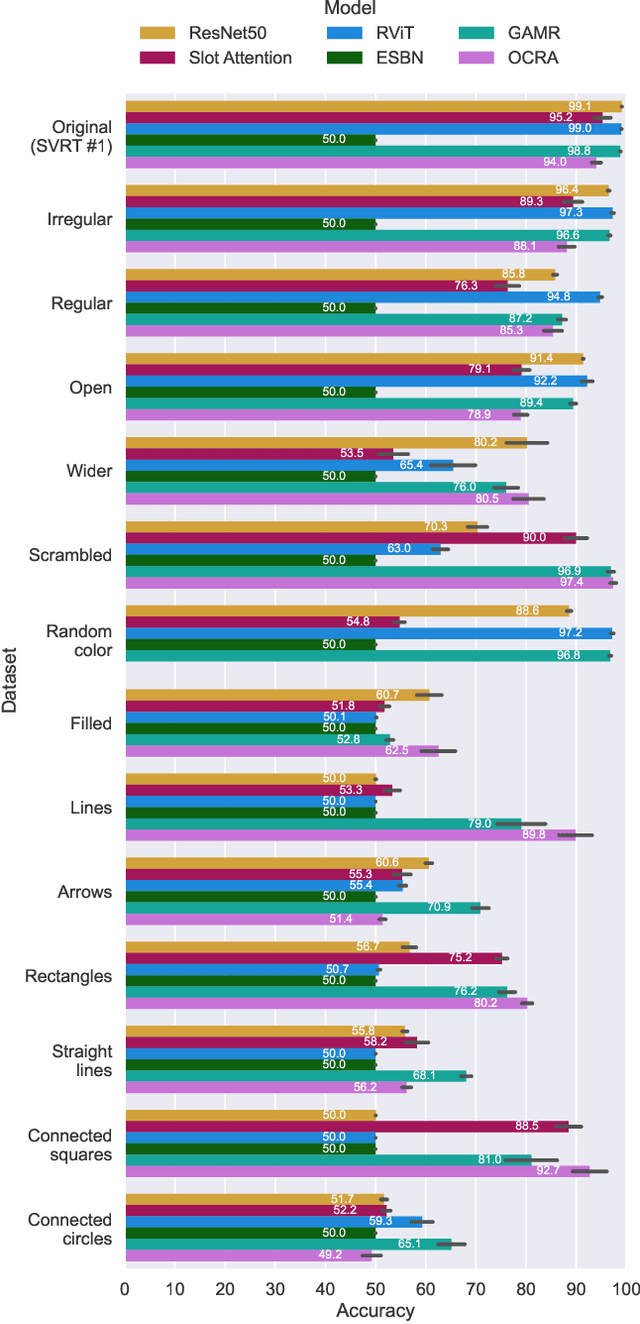
Abstract:Visual reasoning is a long-term goal of vision research. In the last decade, several works have attempted to apply deep neural networks (DNNs) to the task of learning visual relations from images, with modest results in terms of the generalization of the relations learned. In recent years, several innovations in DNNs have been developed in order to enable learning abstract relation from images. In this work, we systematically evaluate a series of DNNs that integrate mechanism such as slot attention, recurrently guided attention, and external memory, in the simplest possible visual reasoning task: deciding whether two objects are the same or different. We found that, although some models performed better than others in generalizing the same-different relation to specific types of images, no model was able to generalize this relation across the board. We conclude that abstract visual reasoning remains largely an unresolved challenge for DNNs.
Learning Relational Rules from Rewards
Mar 28, 2022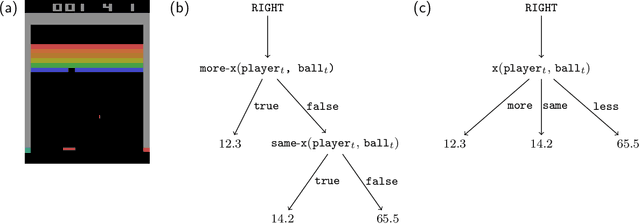
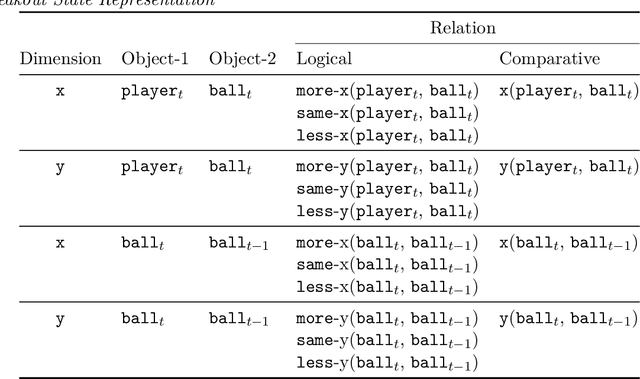
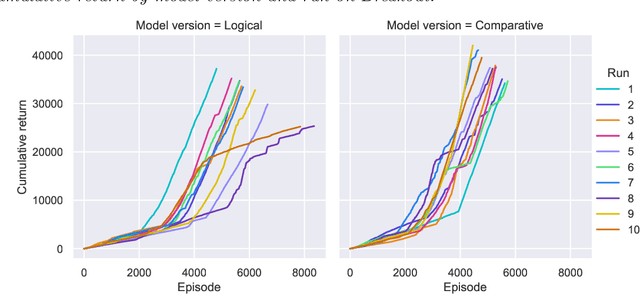
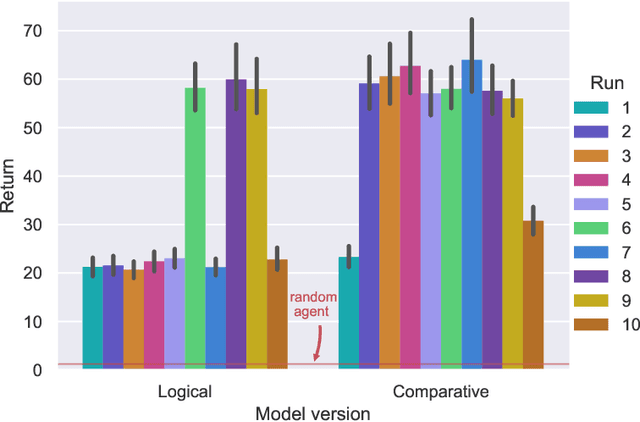
Abstract:Humans perceive the world in terms of objects and relations between them. In fact, for any given pair of objects, there is a myriad of relations that apply to them. How does the cognitive system learn which relations are useful to characterize the task at hand? And how can it use these representations to build a relational policy to interact effectively with the environment? In this paper we proposed that this problem can be understood through the lens of a sub-field of symbolic machine learning called relational reinforcement learning (RRL). To demonstrate the potential of our approach, we build a simple model of relational policy learning based on a function approximator developed in RRL. We trained and tested our model in three Atari games that required to consider an increasingly number of potential relations: Breakout, Pong and Demon Attack. In each game, our model was able to select adequate relational representations and build a relational policy incrementally. We discuss the relationship between our model with models of relational and analogical reasoning, as well as its limitations and future directions of research.
Relation learning in a neurocomputational architecture supports cross-domain transfer
Oct 11, 2019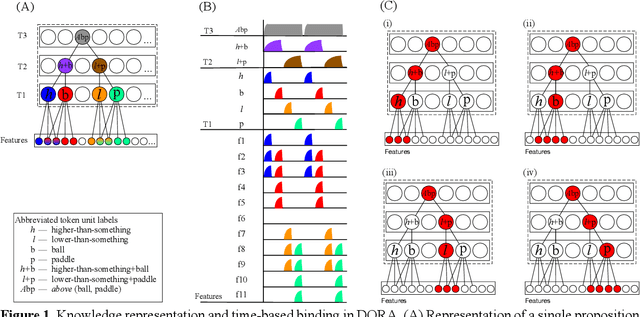
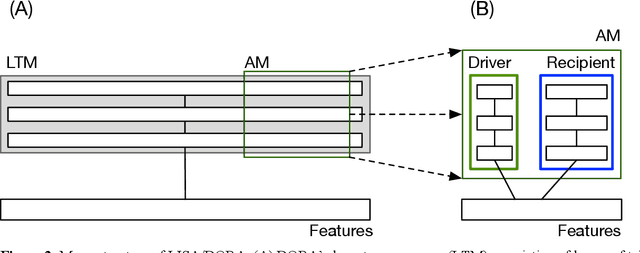


Abstract:People readily generalise prior knowledge to novel situations and stimuli. Advances in machine learning and artificial intelligence have begun to approximate and even surpass human performance in specific domains, but machine learning systems struggle to generalise information to untrained situations. We present and model that demonstrates human-like extrapolatory generalisation by learning and explicitly representing an open-ended set of relations characterising regularities within the domains it is exposed to. First, when trained to play one video game (e.g., Breakout). the model generalises to a new game (e.g., Pong) with different rules, dimensions, and characteristics in a single shot. Second, the model can learn representations from a different domain (e.g., 3D shape images) that support learning a video game and generalising to a new game in one shot. By exploiting well-established principles from cognitive psychology and neuroscience, the model learns structured representations without feedback, and without requiring knowledge of the relevant relations to be given a priori. We present additional simulations showing that the representations that the model learns support cross-domain generalisation. The model's ability to generalise between different games demonstrates the flexible generalisation afforded by a capacity to learn not only statistical relations, but also other relations that are useful for characterising the domain to be learned. In turn, this kind of flexible, relational generalisation is only possible because the model is capable of representing relations explicitly, a capacity that is notably absent in extant statistical machine learning algorithms.
The relational processing limits of classic and contemporary neural network models of language processing
May 12, 2019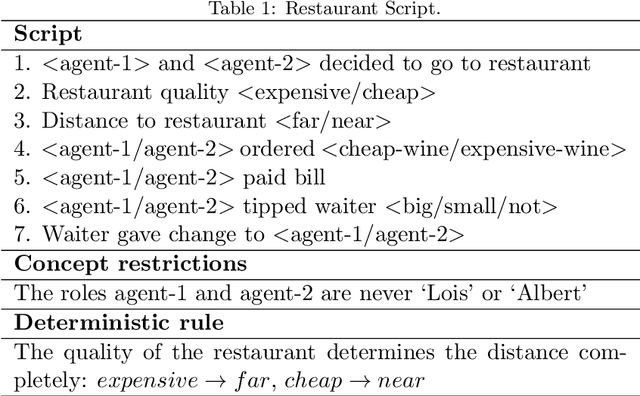
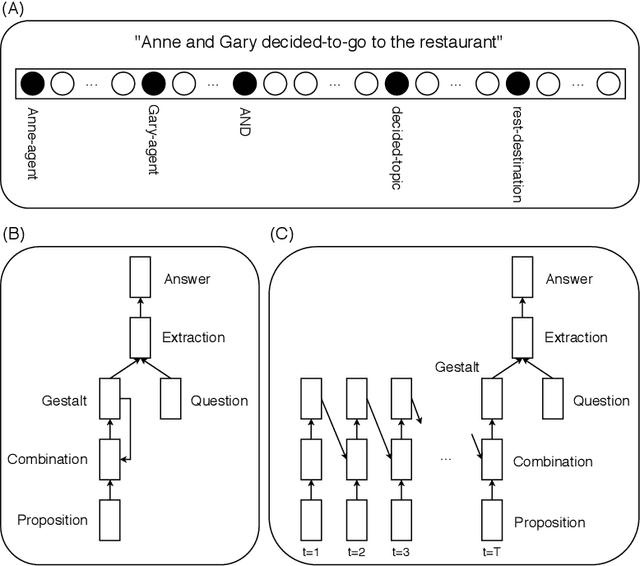

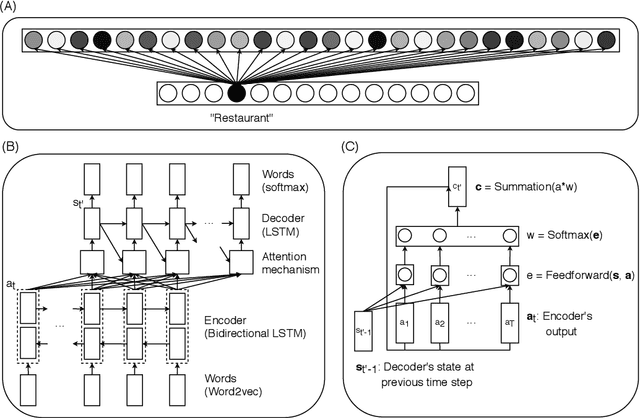
Abstract:The ability of neural networks to capture relational knowledge is a matter of long-standing controversy. Recently, some researchers in the PDP side of the debate have argued that (1) classic PDP models can handle relational structure (Rogers & McClelland, 2008, 2014) and (2) the success of deep learning approaches to text processing suggests that structured representations are unnecessary to capture the gist of human language (Rabovsky et al., 2018). In the present study we tested the Story Gestalt model (St. John, 1992), a classic PDP model of text comprehension, and a Sequence-to-Sequence with Attention model (Bahdanau et al., 2015), a contemporary deep learning architecture for text processing. Both models were trained to answer questions about stories based on the thematic roles that several concepts played on the stories. In three critical test we varied the statistical structure of new stories while keeping their relational structure constant with respect to the training data. Each model was susceptible to each statistical structure manipulation to a different degree, with their performance failing below chance at least under one manipulation. We argue that the failures of both models are due to the fact that they cannotperform dynamic binding of independent roles and fillers. Ultimately, these results cast doubts onthe suitability of traditional neural networks models for explaining phenomena based on relational reasoning, including language processing.
Human-like generalization in a machine through predicate learning
Jun 06, 2018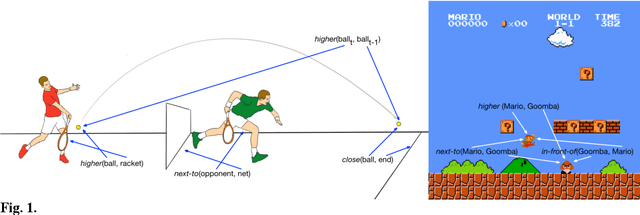
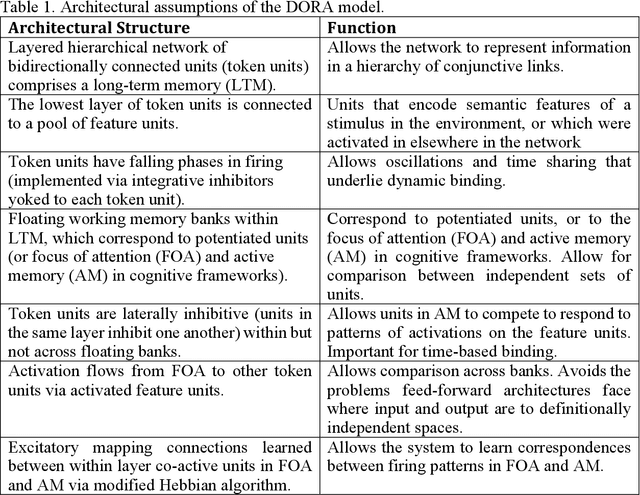
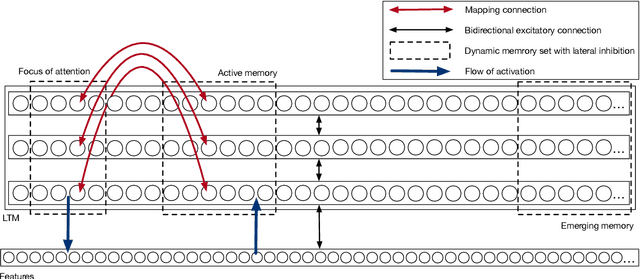
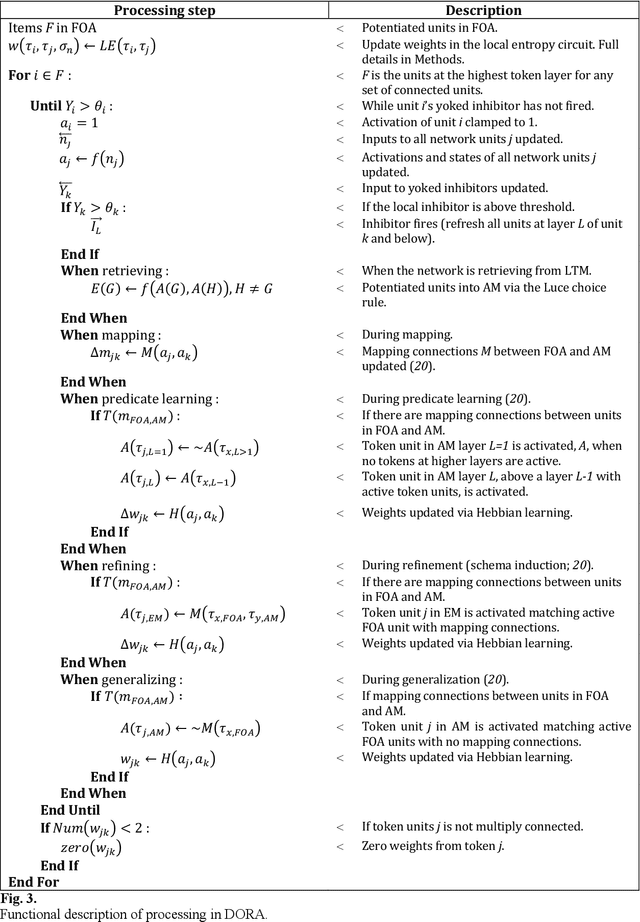
Abstract:Humans readily generalize, applying prior knowledge to novel situations and stimuli. Advances in machine learning and artificial intelligence have begun to approximate and even surpass human performance, but machine systems reliably struggle to generalize information to untrained situations. We describe a neural network model that is trained to play one video game (Breakout) and demonstrates one-shot generalization to a new game (Pong). The model generalizes by learning representations that are functionally and formally symbolic from training data, without feedback, and without requiring that structured representations be specified a priori. The model uses unsupervised comparison to discover which characteristics of the input are invariant, and to learn relational predicates; it then applies these predicates to arguments in a symbolic fashion, using oscillatory regularities in network firing to dynamically bind predicates to arguments. We argue that models of human cognition must account for far- reaching and flexible generalization, and that in order to do so, models must be able to discover symbolic representations from unstructured data, a process we call predicate learning. Only then can models begin to adequately explain where human-like representations come from, why human cognition is the way it is, and why it continues to differ from machine intelligence in crucial ways.
 Add to Chrome
Add to Chrome Add to Firefox
Add to Firefox Add to Edge
Add to Edge